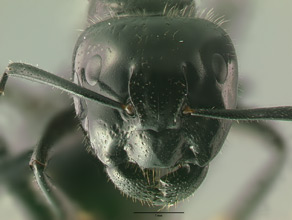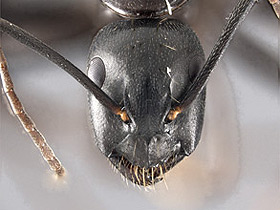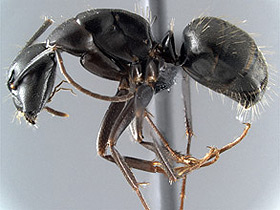- Identification
- This species is easily separated from all other North American Camponotus species by the majors, minors, females, and males being shiny black and having short, bristly hairs on the antennal scapes (Mackay). The workers are polymorphic, with a large soldier caste.
- Biology
- Camponotus laevigatus is a forest species that nests in rotten logs and stumps. It is an occasional pest in buildings. Gregg (1963) reports from Colorado: "..this species is closely associated with wooded and forested areas and forest margins, not being found at any great distances from them in open habitats. It requires rotting logs in various degrees of decomposition, especially the early stages, although if more records were available the ant might be seen to utilize a greater assortment of decaying woods. My general impression is that laevigatus shows a preference for rather sound pine logs in the second to third stages of disintegration."
- additional biology notes...
- Distribution
- Range
- Canada, United States, Mexico. Montana west to British Colombia, south to California and Baja California Norte, and east to New Mexico.
- Navajo Reservation Records
- Records being processed.
- Additional Notes
- Camponotus laevigatus is less common than other forest dwelling North American carpenter ants that have both large colonies and large soldiers. The size of mature colonies is uncertain. A single nest collected in Washington state was estimated to contain about 1,000 individuals but Akre et al. (1994) speculated that colonies may contain ten to twenty times as many workers. Individuals forage during the day and do not use regular trails (Hansen and Akre 1985).
- Etymology
- Morphological. laevigatus means smooth or slippery and this describes the ant's shiny integument.
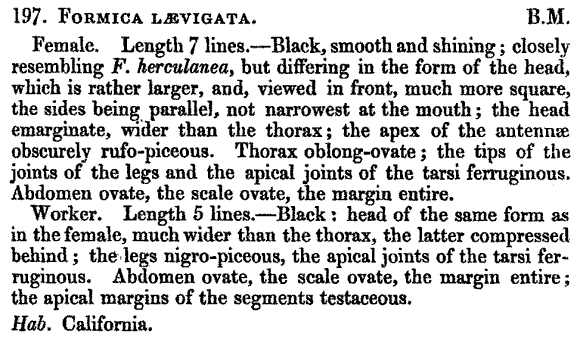

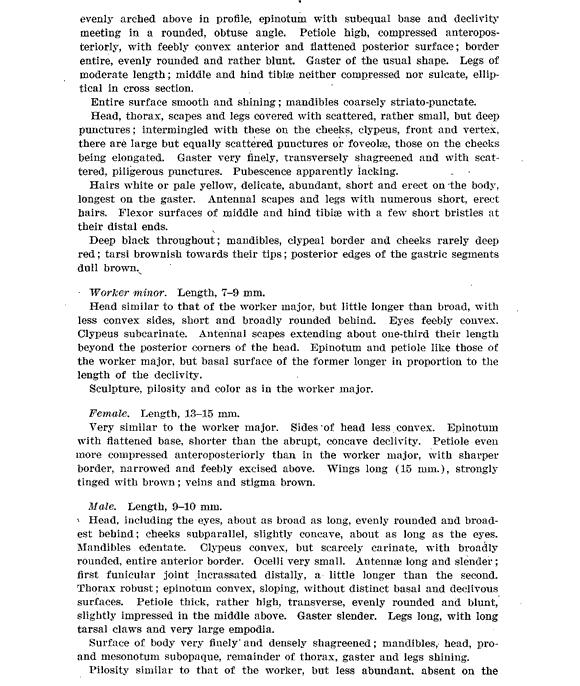

- Literature
- Akre, R. D., L. D. Hansen, and E. A. Myhre. 1994. Colony size and polygyny in carpenter ants (Hymenoptera: Formicidae). Journal of the Kansas Entomological Society. 67:1-9.
- Gregg, R. E. 1963. The ants of Colorado, with reference to their ecology, taxonomy, and geographic distribution. University of Colorado Press, Boulder.
- Hansen, L. D. and R. D. Akre. 1985. Biology of carpenter ants in Washington State (Hymenoptera: Formicidae: Camponotus). Melanderia. 43:1-62.
- Smith, F. 1858. Catalogue of hymenopterous insects in the collection of the British Museum. Part VI. Formicidae. British Museum, London. PDF
- Wheeler, W. M. 1910. The North American ants of the genus Camponotus Mayr. Annals of the New York Academy of Sciences. 20:295-354. PDF
- A note about these publications. The literature cited here is not meant to be an exhaustive list of papers published about this species.
Page authored by David Lubertazzi and Gary Alpert
